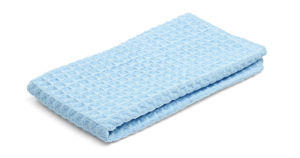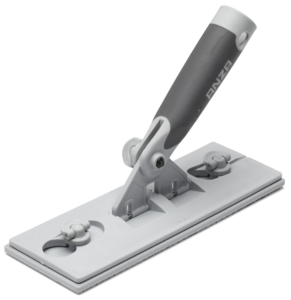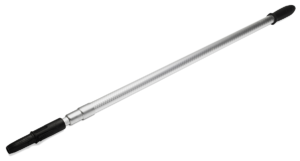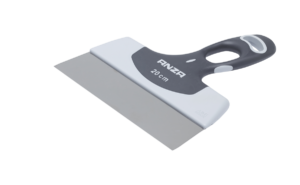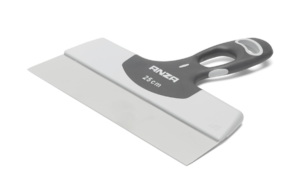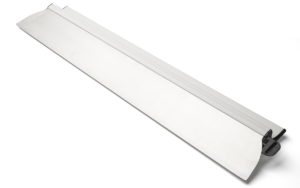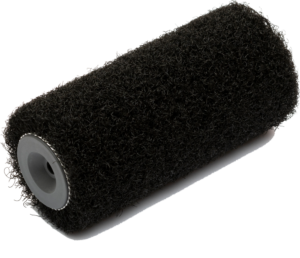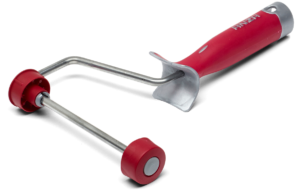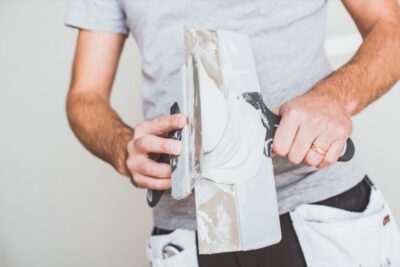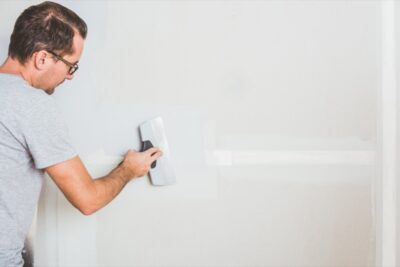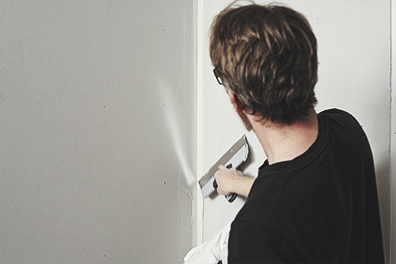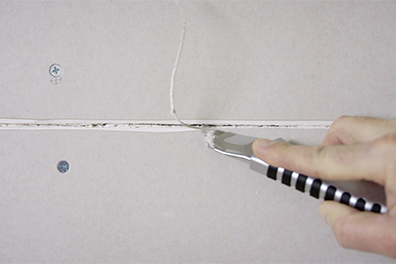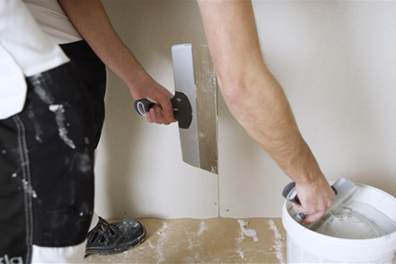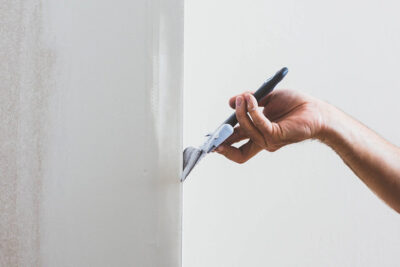- Home
- Plastering
- Plastering with a roller – how to, step by step
Plastering with a roller – how to, step by step
Plastering with a roller means that you first roll out the putty with a roller and then smoothing the surface with a wide filling knife.
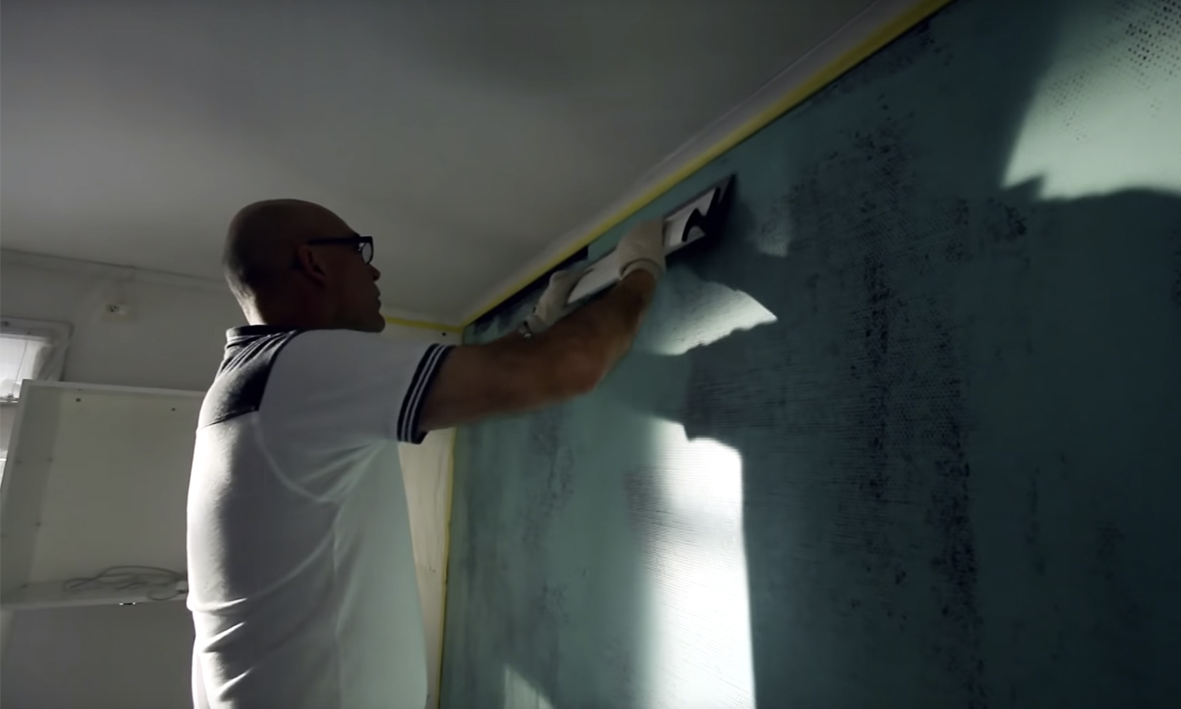
-
Steg 1/2 Prep work
Produkter i användning
-
Steg 2/2 Plaster
Detaljerade instruktioner i text
Så gör du:
-
1Prep work-
-
2Plaster-
-
1/2 — Prep work -
2/2 — Plaster
Step by Step
-
1Prep work
-
2Plaster
-
1
Prep work
Start by removing anything that might get in the way of your work, such as plugs, cords and lights. To avoid damaging your floor, it is best to cover it with rosin paper. It is also a good idea to mask walls and mouldings with masking tape.
Now you’re almost ready to start to plaster with a roller, but first it’s important to clean the wall.
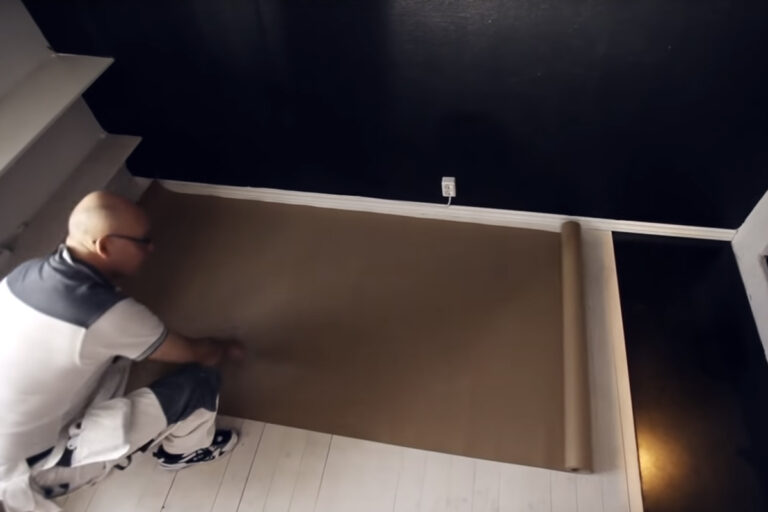
Now it’s time to prepare the wall itself for the plaster. In order to get the smoothest possible base for plastering, all joints and irregularities need to be sanded down on the wall. Use a hinged sanding tool and now attach an sanding paper and the sanding tool to an extension pole to reach further and work more ergonomically. When finished sanding, wipe off any sanding dust with a microfiber cloth.
-
2
Plaster
Tip!
Now it’s time to start to plaster. Start by filling the roller generously with putty and start rolling it on the wall. Use a wide filling knife to apply putty in the edges and in tight spaces where the roller can’t reach as well. To get the smoothest possible surface, it is best to use a two-handed wide filling knife, but you can also use a wider filling knife.
Plaster with a roller technique
After applying with the roller, the technique is to start from the bottom and make long pulls up the middle of the wall with the filling knife. Then pull with the wide filling knife again, but this time from the top and towards the middle instead. Take your time, usually you need to go over the surface several times to get a really smooth surface.
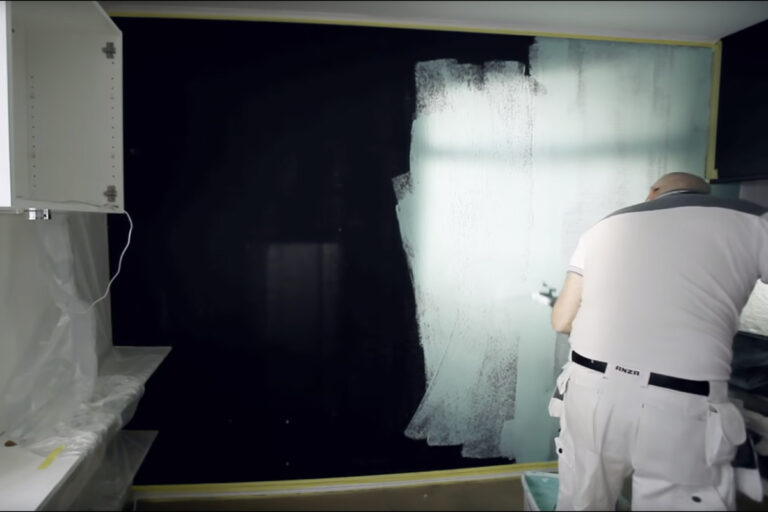
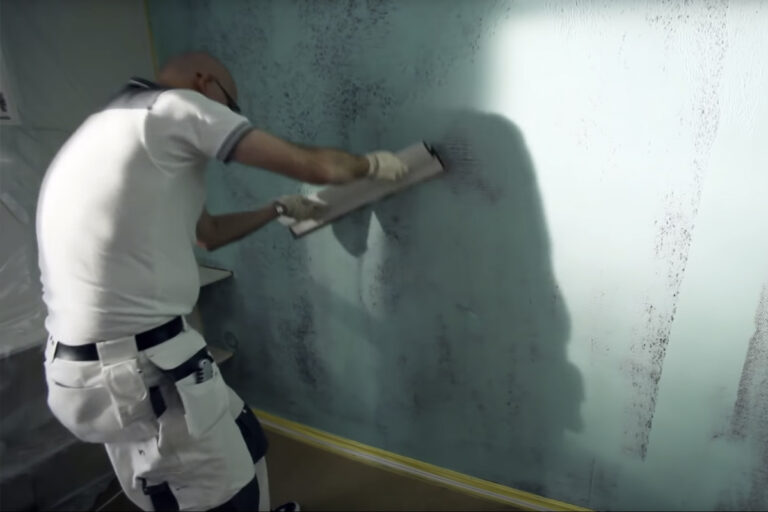
Once you have rolled the entire wall, allow the plaster to dry thoroughly. Then lightly sand the surface and wipe off the sanding dust from the wall. Then do the whole plastering process all over again and you’ll soon have a really good base to paint or wallpaper on.
Good luck!

